Abstract
OBJECTIVES: This study was conducted to define factors associated with the epidemic spread, elimination, and reintroduction of primary and secondary syphilis in King County, Washington, from 1987 through 1998. METHODS: Reports of primary and secondary syphilis in King County from 1987 through 1998 were reviewed retrospectively. RESULTS: During the epidemic spread of syphilis, only 15.8% of cases were imported. A total of 24.0% of patients reported cocaine use, and 18.3% of female patients reported having commercial sex. During the elimination of syphilis, significantly higher percentages of cases were imported and lower percentages of patients reported cocaine use or female commercial sex. During the reintroduction of syphilis in 1997-1998, 68% of patients were men who reported sex with men; of this 68%, 66% were sero-positive for HIV. Most men reporting sex with men were 30 years or older and recruited many anonymous partners. CONCLUSIONS: As syphilis wanes, local control must focus on outbreaks following its reintroduction. Resurgence of syphilis among men reporting sex with men recapitulates the epidemiology of syphilis before the historical advent of AIDS, warranting immediate attention to this problem.
Full text
PDF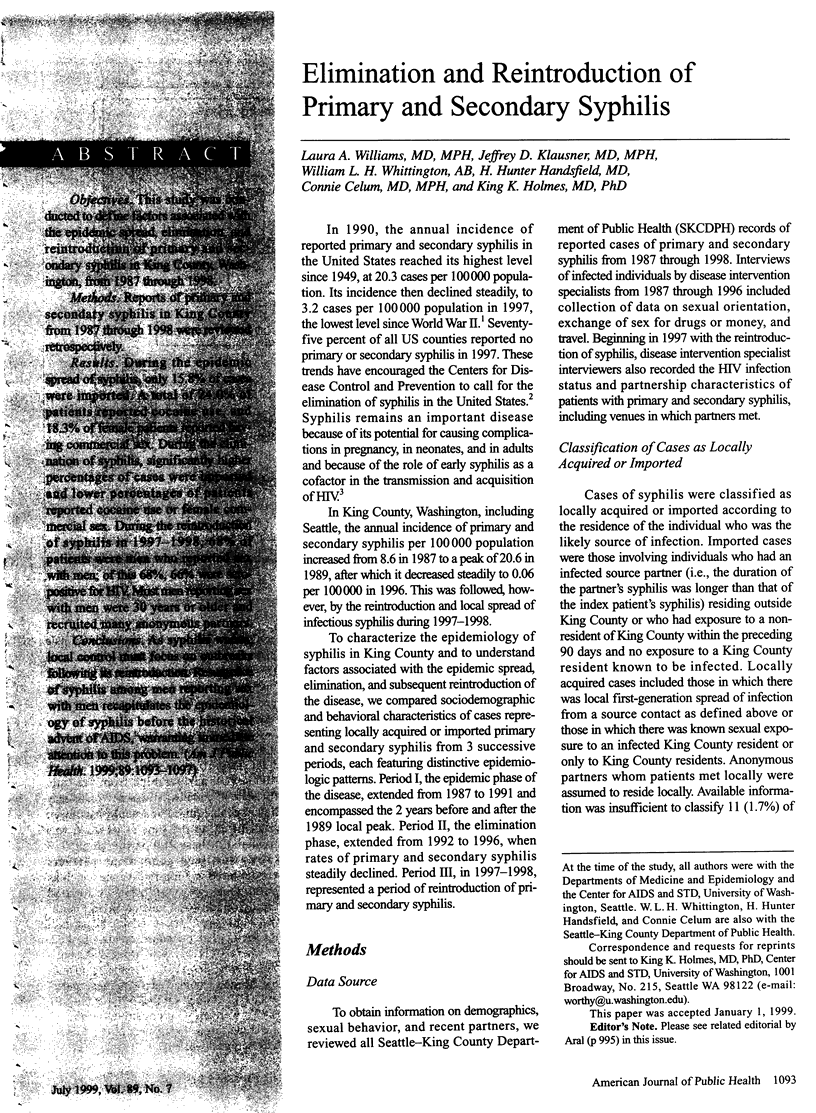
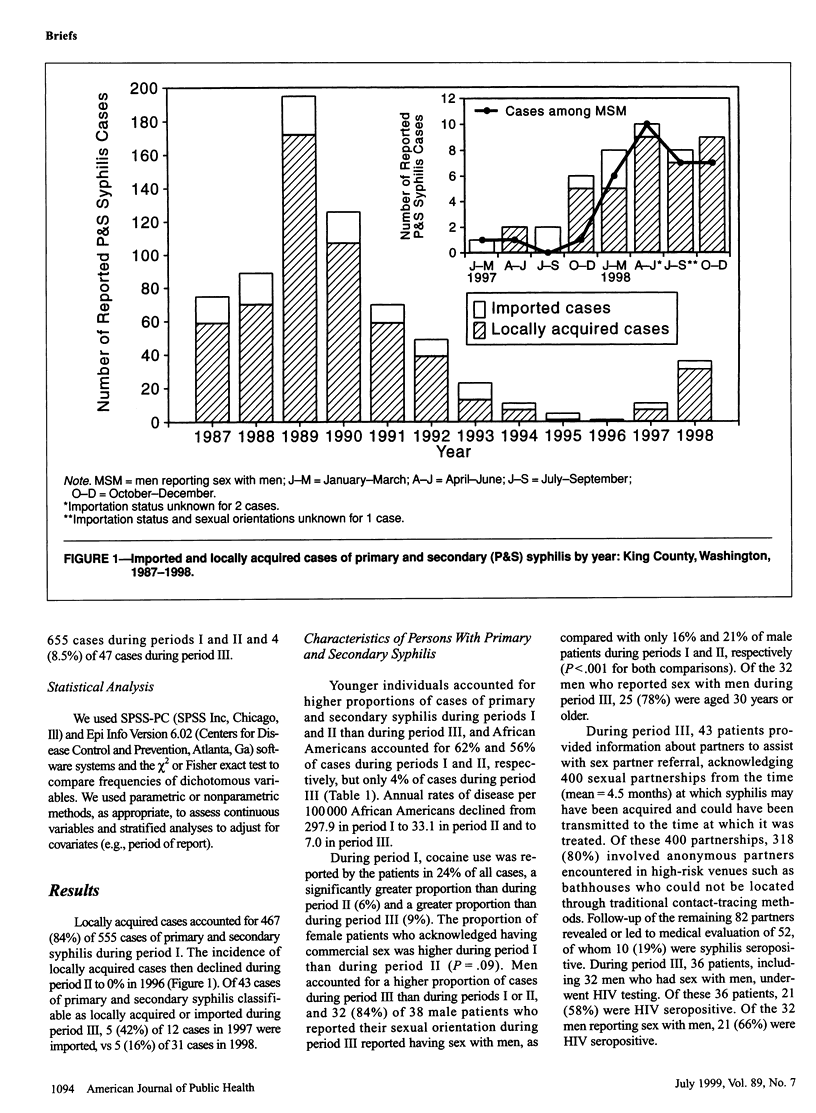
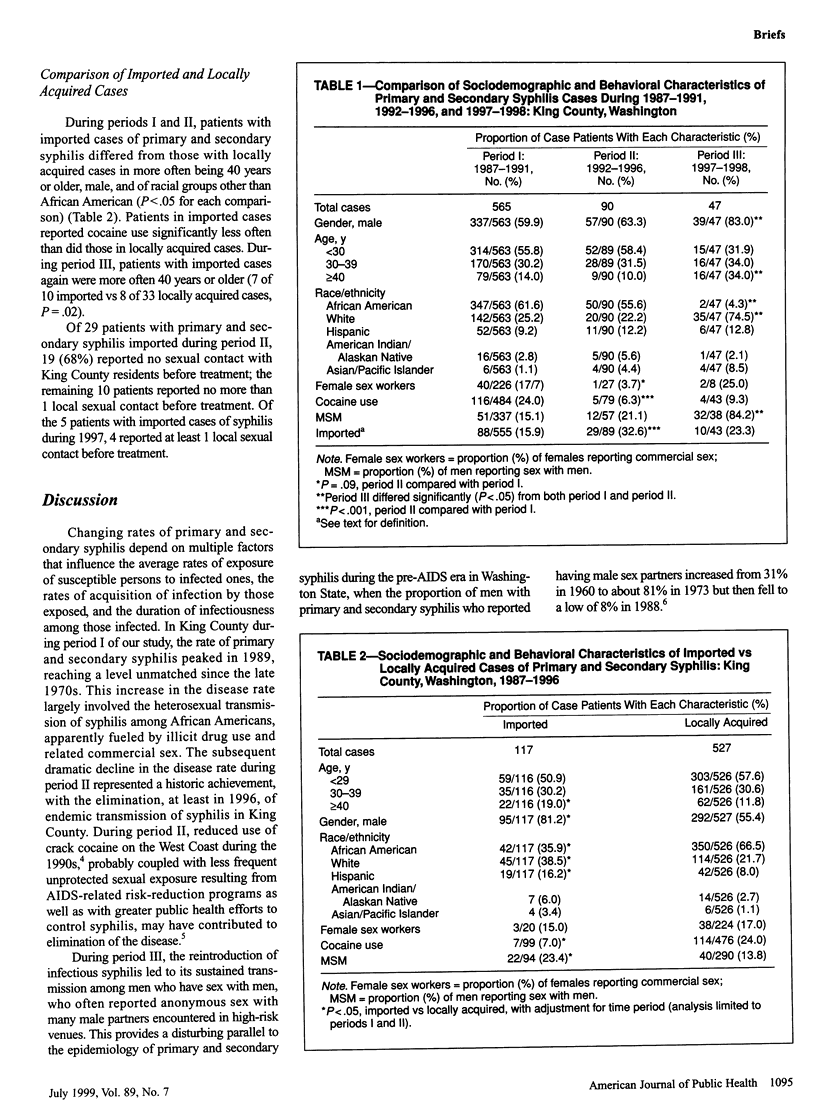
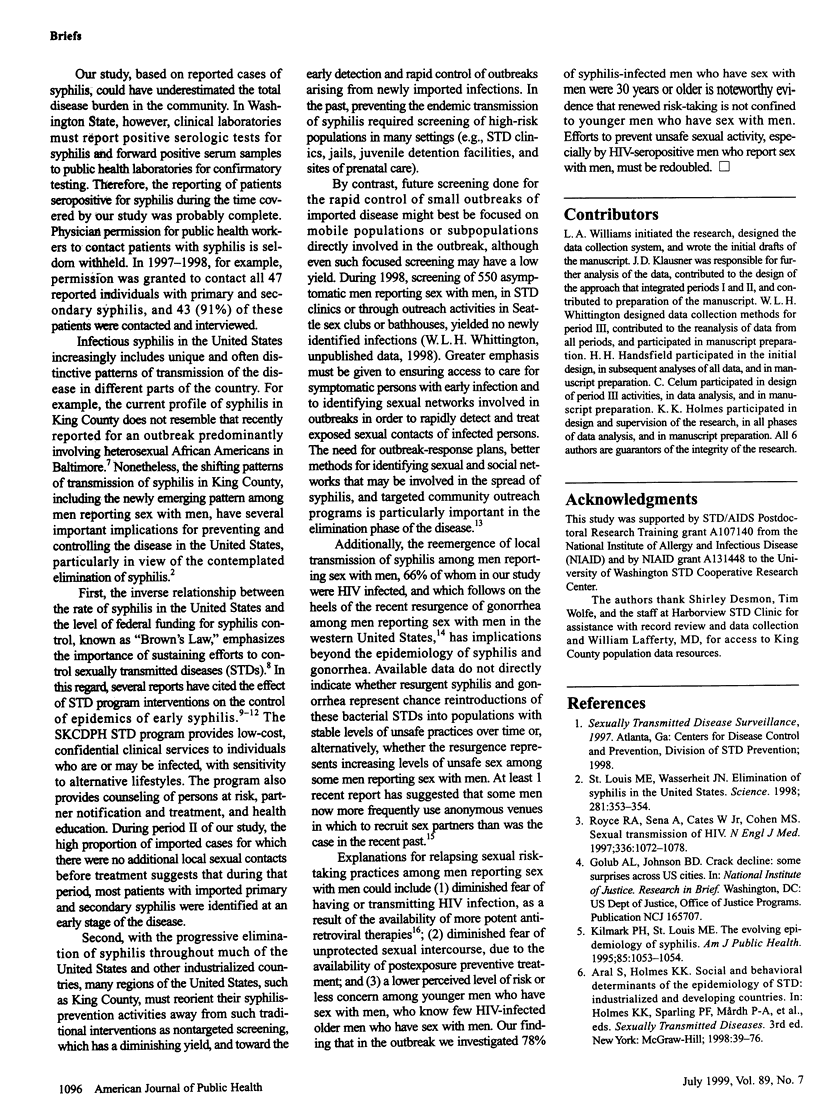
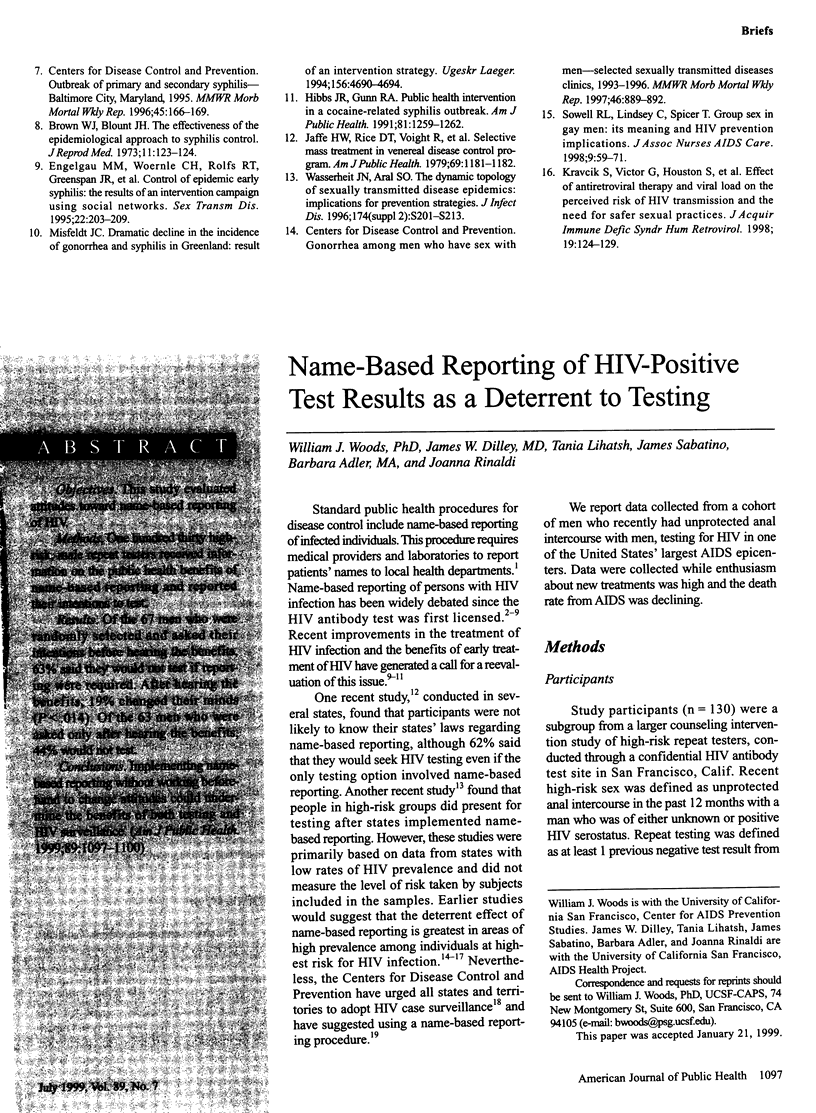
Selected References
These references are in PubMed. This may not be the complete list of references from this article.
- Brown W. J., Blount J. H. The effectiveness of the epidemiological approach to syphilis control. J Reprod Med. 1973 Sep;11(3):123–124. [PubMed] [Google Scholar]
- Engelgau M. M., Woernle C. H., Rolfs R. T., Greenspan J. R., O'Cain M., Gorsky R. D. Control of epidemic early syphilis: the results of an intervention campaign using social networks. Sex Transm Dis. 1995 Jul-Aug;22(4):203–209. [PubMed] [Google Scholar]
- Hibbs J. R., Gunn R. A. Public health intervention in a cocaine-related syphilis outbreak. Am J Public Health. 1991 Oct;81(10):1259–1262. doi: 10.2105/ajph.81.10.1259. [DOI] [PMC free article] [PubMed] [Google Scholar]
- Jaffe H. W., Rice D. T., Voigt R., Fowler J., St John R. K. Selective mass treatment in a venereal disease control program. Am J Public Health. 1979 Nov;69(11):1181–1182. doi: 10.2105/ajph.69.11.1181. [DOI] [PMC free article] [PubMed] [Google Scholar]
- Kilmarx P. H., St Louis M. E. The evolving epidemiology of syphilis. Am J Public Health. 1995 Aug;85(8 Pt 1):1053–1054. doi: 10.2105/ajph.85.8_pt_1.1053. [DOI] [PMC free article] [PubMed] [Google Scholar]
- Kravcik S., Victor G., Houston S., Sutherland D., Garber G. E., Hawley-Foss N., Angel J. B., Cameron D. W. Effect of antiretroviral therapy and viral load on the perceived risk of HIV transmission and the need for safer sexual practices. J Acquir Immune Defic Syndr Hum Retrovirol. 1998 Oct 1;19(2):124–129. doi: 10.1097/00042560-199810010-00004. [DOI] [PubMed] [Google Scholar]
- Misfeldt J. C. Dramatisk fald i forekomsten af gonoré og syfilis i Grønland--resultatet af en interventionsstrategi? Ugeskr Laeger. 1994 Aug 15;156(33):4690–4694. [PubMed] [Google Scholar]
- Royce R. A., Seña A., Cates W., Jr, Cohen M. S. Sexual transmission of HIV. N Engl J Med. 1997 Apr 10;336(15):1072–1078. doi: 10.1056/NEJM199704103361507. [DOI] [PubMed] [Google Scholar]
- Sowell R. L., Lindsey C., Spicer T. Group sex in gay men: its meaning and HIV prevention implications. J Assoc Nurses AIDS Care. 1998 May-Jun;9(3):59–71. doi: 10.1016/S1055-3290(98)80020-4. [DOI] [PubMed] [Google Scholar]
- St Louis M. E., Wasserheit J. N. Elimination of syphilis in the United States. Science. 1998 Jul 17;281(5375):353–354. doi: 10.1126/science.281.5375.353. [DOI] [PubMed] [Google Scholar]
- Wasserheit J. N., Aral S. O. The dynamic topology of sexually transmitted disease epidemics: implications for prevention strategies. J Infect Dis. 1996 Oct;174 (Suppl 2):S201–S213. doi: 10.1093/infdis/174.supplement_2.s201. [DOI] [PubMed] [Google Scholar]


